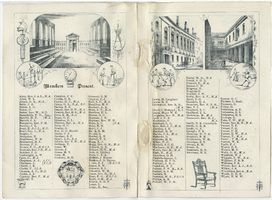Search the Special Collections and Archives Portal
Search Results
UNLV Libraries Collection on Claes Oldenburg's Flashlight Sculpture
Identifier
Abstract
The UNLV Libraries Collection on Claes Oldenburg's
Archival Collection
Gay and Lesbian Community Center of Southern Nevada Records
Identifier
Abstract
The Gay and Lesbian Community Center of Southern Nevada Records (1992-2023) and include news articles, institutional records such as bylaws, agendas, and meeting minutes, ephemera, and programs for the Center’s annual Honorarium fundraiser. Additional materials include materials relating the the wellness clinic.
Archival Collection
Boardwalk Hotel and Casino Records
Identifier
Abstract
The Boardwalk Hotel and Casino Records date from 1993 to 2005 and contain administrative files, gaming projects and systems files, promotional photographs, advertisements, and audiovisual materials pertaining to the Boardwalk Hotel and Casino. The collection also contains material for the Boardwalk under its various names, including the Boardwalk Hotel and Casino, Viscount Hotel, and Holiday Inn Casino Boardwalk.
Archival Collection
Henry Kronberg Papers
Identifier
Abstract
The Henry Kronberg Papers is comprised of photographs, newspaper clippings, and business records from 1945 to 2017 that document Henry Kronberg's business, Stoney's Pawn Shop, his personal life, and his involvement with the Jewish community in Las Vegas, Nevada. The collection also includes
Archival Collection
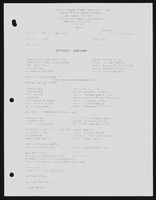
Alpha Kappa Alpha Sorority, Theta Theta Omega Chapter executive committee agenda
Date
Archival Collection
Description
From the Alpha Kappa Alpha Sorority, Incorporated, Theta Theta Omega Chapter Records (MS-01014) -- Chapter records file.
Text
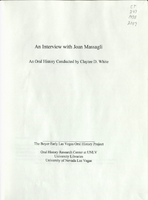
Transcript of interview with Joan Massagli by Claytee White, August 19, 2010
Date
Archival Collection
Description
Joan Massagli spent her childhood in the Tacoma, Washington area, singing three-part harmony—a member of a musically talented family that included five children and an aunt and uncle who raised all the kids to enjoy music. By high school in the early 1950s, she and her two older sisters were regulars on a local TV show. In 1956, the Sawyer Sisters act was formed and they were soon obtaining regular gigs in Las Vegas. Their popularity continued form 1957 to 1964 and they played many of the major hotels, usually as a warm up act for headliners that includes a list of names such as Roy Clark, Louis Prima, Shecky Greene, and Delia Reece. At first the Sawyer Sisters included older sister Nanette Susan and Joan. When Nanette quit to raise her family, youngest sister Kate stepped into what was called a "lively and lovely" trio. Joan met her future husband and musician Mark Tully Massagli, while performing in the early 1960s. Caring for ailing parents while working mostly in Las Vegas, the couple made Vegas home. Even after the Sawyer Sisters name faded from the Strip's marquees, Las Vegas remained home to the Massagli's, who raised their children here. Today they live in the Blue Diamond Village area and recall the changes that have occurred on the Las Vegas Strip—especially from an entertainer's point of view.
Text
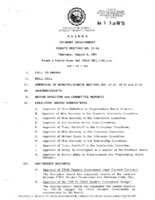
Meeting minutes for Consolidated Student Senate University of Nevada, Las Vegas, August 8, 1991
Date
Archival Collection
Description
Text
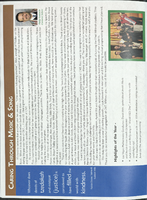
Annual report from Congregation Ner Tamid, 2008-2009
Date
Archival Collection
Description
Annual report from Congregation Ner Tamid, 2008-2009
Text
UNLV Libraries Collection on the Las Vegas Paiute Tribe
Identifier
Abstract
The UNLV Libraries Collection on the Las Vegas Paiute Tribe (approximately 1974-1990) contain oral history transcripts of Paiute community members from approximately 1974 to 1977 and reproductions of Bureau of Indian Affairs correspondence, legal documents, annual reports, and census information regarding the area formerly known as the Las Vegas Indian Colony located in Las Vegas, Nevada. The documents contain information about the original transfer of property ownership from Helen J. Stewart to the United States, who acted on behalf of the Paiute people in 1911, the establishment of the original site location, and annual reports which include a narrative about the community, census information, and health reports of the population living in the area. The collection contains no original documents.
Archival Collection

